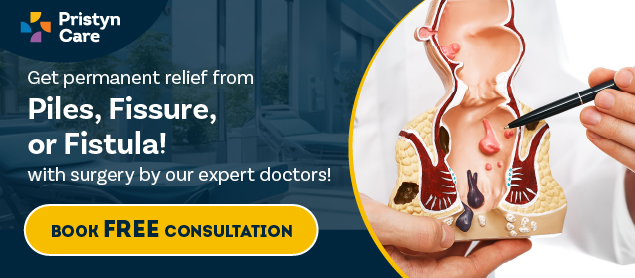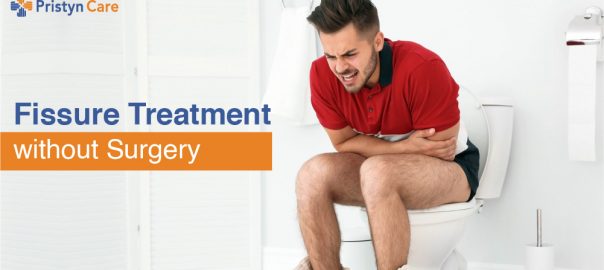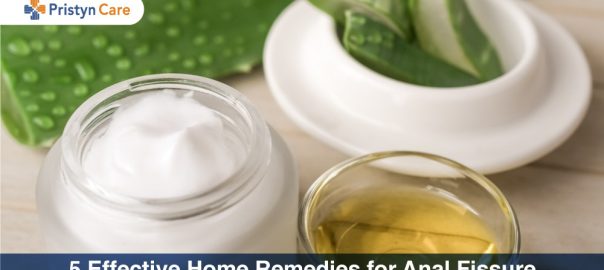![]() Views: 58,127
Views: 58,127
Difference Between Piles and Fissure
Dedicated Support at Every Step!
Our Doctors are available 24 hours a day, 7 days a week to help you!
Most people are unaware that Anal Fissure and Anal Fistula too have similar symptoms but are totally different diseases. Anal Fissure, Anal Fistula, and Piles are all anorectal diseases with similar causes and symptoms but the treatments and preventions for all are different.
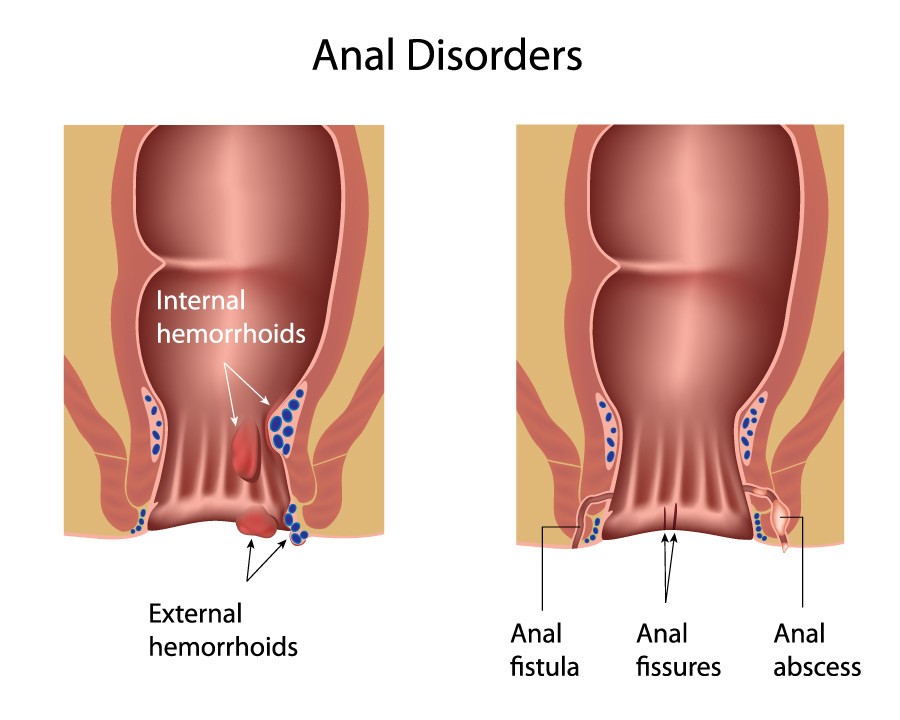
Table of Contents
Read ahead to know the difference between Piles and Fissure.
| Comparison | Piles | Fissure |
|---|---|---|
| Definition | Blood veins and tissue swell in the anal area, especially around the anal opening. | Tear in the thin skin of the anal opening. |
| Causes | Schedule of sitting on a hard surface for continuous hours, putting strain or pressure on blood veins in the anal area, Constipation, Chronic Cough, Pregnancy. | Regularly passing hard stool or doing it often cuts the skin of the anal area. Causes are - Constipation, Pregnancy, Sitting on a toilet seat for a long time, putting a lot of pressure to pass stool, Crohn’s Disease. |
| Symptoms | Blood in stool, Painful Bowel movements, Painful lump can be felt near the anus, Mucus discharge due to puss, Itching, and pain around the anal area, Red and sore skin around the anal area. | Tear around the anal area, Small lump near the tear, Painful bowel movements, blood in stool or toilet paper, Itching or burning sensation around the anal area. |
| Prevention | Fiber-rich diet, drinking a lot of water and liquids, avoid sitting continuously on hard surfaces | Sufficient intake of liquids and a healthy diet. |
| Treatment | Early stage is treatable with medications, home remedies such as sitz bath. For prolapsed stage, hemorrhoid has to be removed surgically. | Lateral Sphincterotomy, open surgery, Laser Treatment. |
Piles- Swollen Veins
Piles, also known as hemorrhoids, is the swelling or inflammation of the blood vessels, muscles and tissues of the anal area. The main causes of piles are chronic constipation, eating spicy food and prolonged sitting. There is a lot of pressure on the veins of the anal area, resulting in swollen veins and tissues.
The blood vessels and veins enlarge and become uncomfortable for the patient sometimes even result in blood in stool. The disease is classified into four grades, depending on the extent of the disease. The physical symptoms can be visually seen after the second Grade of the disease. Piles can be external or internal.
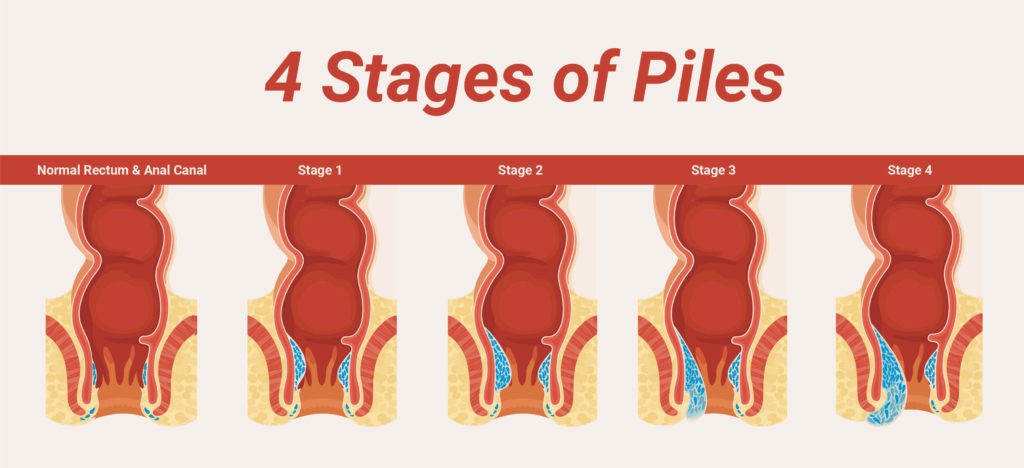
Grade 1 of Piles does not have any visible symptoms or cause much discomfort or pain to the patient.
Grade 2 of Piles is the prolapsed stage. In this, hemorrhoid protrudes out from the anal opening at the time of passing stool. It goes back inside on its own after the bowel movement.
Grade 3 of Piles becomes painful for the patient. Hemorrhoid protrudes out from the anal opening at the time of passing stool. In this stage of the disease, it needs to be pushed back by fingers.
Grade 4 of Piles is a completely and permanently prolapsed stage in which hemorrhoid permanently remains outside. It is extremely painful for the patient to sit or lie down. The patient may even see blood in his stool.
Anal Fissure- Cuts or Tear
A hard stool causes a tear or cuts on the thin skin around the anus, generally around the anal opening. This condition is called anal fissure. Passing stool becomes painful and difficult, leading to constipation.
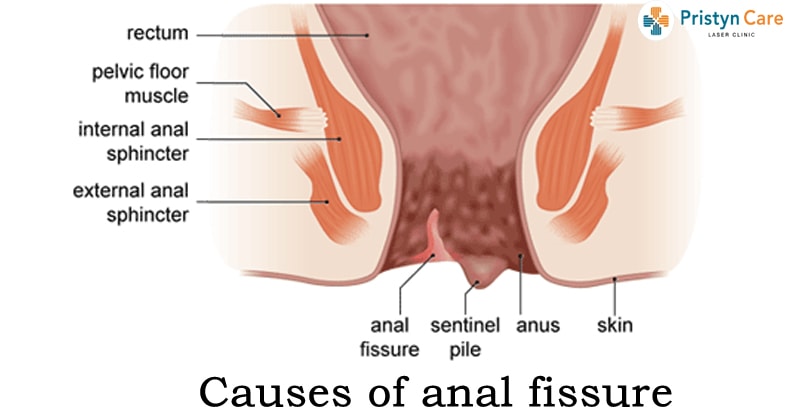
A fissure, if not treated, the tear gets worse as the person continues to pass stool.
This happens because of the pressure on the sphincter muscles to pass stool. This may also lead to the discharge of puss or light bleeding at the time of bowel movements.
The disease is classified as Acute or Chronic Fissure. Acute Fissure is minor and not much complicated. They generally heal on their own with time. In the case of Chronic Fissure, the patient needs serious medical help. The chances of reoccurrence are much higher in case of Chronic in comparison to Acute Fissure.
Treatments
Treatment for Piles
The early stages of piles can be cured with medication, taking healthy, high fiber diet and a lot of water each day. Ice-packs and cold water provide instant but temporary relief from the pain.
There is minimal chance of reccurrence of piles if the patient opts for laser treatment. There is minimal pain during or after the surgery. The patient can go home the same day after the surgery.
Treatment for Fissure
Fissure treatments aim at relaxing the anal sphincter by the passage of soft stool to promote quick healing. In case of an acute fissure, the doctor prescribes mild medication and suggests to eat a healthy, fiber-rich diet with a lot of water and other healthy fluids for the recovery.
Patient with acute fissure is suggested the surgical means to get a cure for it. Open surgery for fissure is painful and takes a long time to heal. Therefore, the best treatment for fissure is laser surgery, which just takes 30 minutes to give a minimally invasive and effective cure for fissure.
No Cost EMI, Hassle-free Insurance Approval
Differences between Piles and Fissure
- Chronic constipation and excessive pressure due to long sitting hours lead to swollen blood vessels or tissues in the anal area and anal canal, resulting in piles. On the other hand, cute or tear in the skin around the anus or anal opening causes a fissure.
- Symptoms of piles are not noticeable in the earlier stages but cause a lot of pain and discomfort and pain in the later stages, often leading to bleeding or mucus discharge. Whereas, fissure causes pain and discomfort since the beginning of the disease. Bleeding is not generally observed in the early stages of the fissure.
- Chronic cough, long-term constipation, and pregnancy exert a lot of pressure on veins in the anal area, leading to piles. While Crohn’s Disease is the main cause of Fissure.
- The early stages of piles may be curable with medication, lifestyle changes, diet, and precautions. Whereas, medication helps the first stage of fissure but the treatment is slow. Doctors generally advise Lateral Sphincterotomy for fissure which gives instant relief.
Conclusion
To summarize, anorectal diseases such as Piles or Fissure have similar symptoms such as painful bowel movements, blood in stool or toilet paper, constipation, pain, swelling, redness or sore skin around the anal area.
Generally, Piles and Fissure happen due to unhealthy eating habits and inactive lifestyle which includes no or less physical activity and sitting for most of the hours each day.
Altogether, the symptoms and causes may be similar to the piles and fissure but they are both totally different diseases, with different treatments, as per the disease.
Moreover, most people are not aware of the extent and diversity in anorectal diseases and suspect of piles on experiencing symptoms like painful bowel movements, blood, mucus or pus discharge, etc.
The patient should consult a doctor before concluding about the disease. Patients should always consult a professional before opting for home remedies or over the counter treatments. No medication or treatment should be followed without consulting an expert.
FAQs
After piles laser surgery, the patient is discharged the same day. Within a day or two, the patient can resume his daily routine. Complete recovery takes around 10 days. It is advised to take note of post-surgery precautions for quick recovery and do not indulge yourself in strenuous activities. For any further queries, consult your medical expert.
To permanently treat fissure, surgery is the best way to get rid of them. Over-the-counter medicines and oral medicines are a temporary solution where the chances of recurrence are high. Laser surgery for fissure is a permanent cure.
After piles laser treatment, there are no major restrictions. The surgery is painless and no wounds, therefore, infection at the incision is not a concern. Still, the medical coordinators explain on how to clean them, follow the same instructions. Diet chart is provided after laser surgery which you must follow as per given instructions and pelvic floor exercises as advised by your surgeon for quick healing.
No, you do not get colon cancer from fissure but you may get fissure when you have colon cancer. Consult a piles doctor if you notice any of the symptoms mentioned.
Yes, Diode Laser is used for both piles and fissure surgery.




